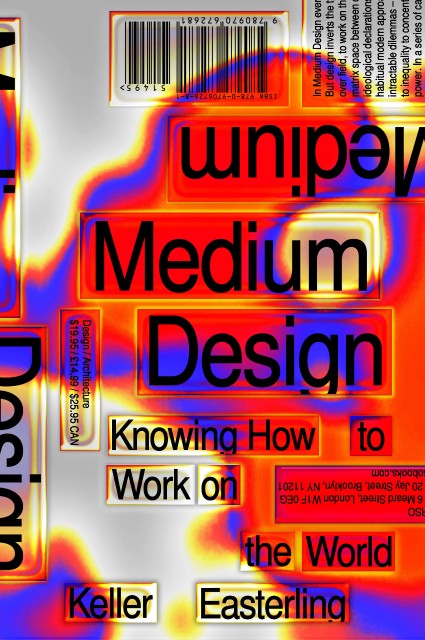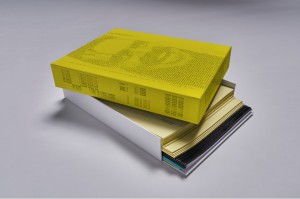On Political Temperament – Keller Easterling

As we watch on as a struggle of binaries plays out in the US, ahead of the publication of her timely new book, architect and writer Professor Keller Easterling asks: ”What if political stances were also placed on a spectrum that gauged their temperament?”
Taking a political stance usually means taking a position on a left-right spectrum that gauges allegiance to a political philosophy or political party. But what if political stances were also placed on a spectrum that gauged their temperament – the degree of violence they induced? A political stance, whatever its content or philosophy can result in authoritarian concentrations of power. Any political stance can exacerbate tense and competitive binaries. The content of these left-right philosophies perhaps tells us very little. And maybe the entire left-right apparatus is a vestige of the modern Enlightenment mind – a set of philosophies and habits cobbled together to replace the certainty of a god but maintaining a quest for ideational monotheism and a Manichean binary struggle between oppositions.
The old liberals go into various contortions as they persist in claiming a political temperament capable of perfecting the dance of free trade exchanges with no concentrations power. The socialist also envisions Kropotkin-like mutualism that, like the liberal fantasy, is perfectly anarchic in temperament. These philosophies – with wildly different origins and motives – are nevertheless espoused in relation to temperamental forces that often remain unexpressed.
And then when consequently misunderstood, and true to the Enlightenment mind that must emerge with the absolute solution, the philosophies square off against each other, baffled that the other cannot see the inherent sense in their proposal. If it were not abundantly clear that temperament was at least as important as content, now temperament in the form of the binary fight fully obliterates content.
Meanwhile the superbugs of power – ignorant of content or savvy enough to know that temperament can overpower it – align with any political philosophy long enough to confuse it or conflate it with its opposite. Superbugs may be political figures, but they may also be any of capital’s noxious cocktails. Decoupling content from temperament, one superbug strategy is to foreground an impossible temperament of harmlessness or benevolence. Trump is a populist decentralizing power. Amazon is a convenient, fun-loving way to deliver a smile. Facebook is an all-access network that is about sharing. Free zone cities are not centers of labor abuse but rather instruments of free trade. It is possible to have a kinder, gentler form of capitalism. A murderous dictator is a dear leader.
Another strategy, often pursued simultaneously, is to foreground those fierce temperaments of ingrained binaries that already exist in culture. Culture can be divided into teams through which the superbug garners loyalty, and the content of political philosophies then becomes only the oft-repeated lyrics of fight songs and purification rituals.

The superbugs working on temperament can even successfully convert dissent associated with an opposing ideology into fuel for their own engine. There are plenty of examples of this trick. Trump sent in the national guard or a MAGA militia to incite racial hatred. The principled activist had no choice but to march in the streets, condemn this hate, and deliver the fight that Trump craved for his own propaganda. Then to unseat the most violent superbugs – to cause them to release their grip – often also requires violence. In self-defense, activists have no choice but to respond to slow, structural violence with a riot. That riot speeds up the existing violence already endured to create a discernable event that is then, maddeningly, regarded to be the only crime.
The superbugs make that fight necessary. Because each side must man their army, even the smartest people in the world, trapped in a binary fight, reinforce the superbug’s own myth that the other side is the singular source of evil. Again monistic minds will declare either capital or socialism to be the anti-Christ. Further purifying and weaponizing their arguments, both sides declare their enemy with full throated declarations and radical manifestos.
Meanwhile all the other sources of evil and lethality – the depravity of whiteness, the controlling power of radical cults, as well as the dangers of nonhuman actors like biological agents or atmospheric chemicals – are only dealt with incidentally as if they were accidents. They are not the providential primordial evil that has become the accustomed target.
But how might political forms respond if, in addition to familiar approaches to resistance, temperament was also gauged? Considering temperament, uprising, rioting, and sabotage are often the gentlest response to much greater structural violence from a dominant regime, and sometimes a direct assault is the only way to unseat abusive power. At the same time, when considering temperament, the Left wisely stayed away from the insurrection at the US Capitol so as not to deliver a fight that might have been used to justify violence. Inciting violence might be considered to be politically radical but temperamentally conservative and conformist. A activist identifies an injustice and takes a stance against it. But while not softening any resolve about fighting that injustice, they might also work to dull binaries – outwitting the superbug’s schemes and robbing them of their white sugar fuel.
Medium Design considers a spectrum of evils—capitalism, fascism, racism, whiteness, imperialism, xenophobia, and sectarian violence – as well as the ensuing dangers of non-human atmospheric and biological agents. This is not a betrayal of any one crucial struggle. (Maybe it is the Enlightenment mind that makes this category mistake – this mistaking of part for whole.) Instead it reflects a keen sense of the ways that political superbugs run rings around singular evils and singular solutions. Singularity only makes it easier for them to keep you in a divisive fight and do whatever they want with you. But a spectrum has a better chance of gathering terms that migrate between multiple struggles to build global solidarity.

Medium Design also suggests that design might sometimes play a stealthy trick of its own since space embodies so many undeclared potentials that can reduce violence and create value through new arrangements – none of which need to go out of their way to exacerbate the violence of a political fight. Early in the book there is an anecdote about a parent with squabbling children who does not attempt to litigate or parse the content of the argument, but rather manages potentials in the environment. They might lower the temperature of the room, move a chair into the light, increase the blood sugar of one child, or introduce a pet into the arms of another so that the chemistry of the room no longer induces or supports violence. In another example, a dog hears a human speak the words “good girl,” but it does not take meaning from the lexical expression alone. The dog also gathers meaning from many other cues and relative positions between things in context: whether the human is holding a leash, their position relative to the door or the dog bowl and even their level of tension. Together with the sound of words, the dog assesses all of these potentials and temperaments.
Like the parent or the canine, designers can take hold of, dismantle, and rewire some of the abusive structures of capital by manipulating an interplay of physical contours that are also expressing limits, capacities, and values. If there is no single all-encompassing market and if there is no comprehensive solution to await, designers can work on many modes of exchange that can be nourished in parallel. While potentially repulsive to the purist who is waiting for a more transcendent moment, this approach may respond right away to urgent issues with the material at hand. Different from the neoliberal “working from within,” this is a form of reverse engineering that may nevertheless use the dominant market’s own multipliers as a way amplifying their inversion within the vast infrastructures of inequality, labor abuse, climate catastrophe that causes suffering on all sides.
The work is not solutionist, and it doesn’t put its faith solely in new technologies and data. What is needed is not the more precise measurement of global problems, but a synthetic design imagination. The form for innovation is something more like a “lumpier” set of protocols, not unlike the essential protocols that followed for COVID-19 prevention. They mix information of many kinds, from the scale of microns to the scale of territories. It may be that in addition to new technologies and quantitative appraisals of spatial economies, the protocols for these mixtures and rewired relationships should be regarded as the most consequential innovations.
Finding the means to short-circuit and transition away from abusive organizations and industries can also work on their temperament to simultaneously defuse and unwind. These efforts potentially benefit from the insanity of the weak and friable fights as well the contorted logics and lies used by those who hoard power. Countering authoritarian power requires all the techniques we have – direct, indirect, and everything in between.
Keller Easterling
Originally published in January, this article has since been amended by the author to clarify the argument and better reflect Medium Design’s intentions and alliances.
Images, from top: Keller Easterling portrait; ‘Trump’ Photo by Rob Walsh on Unsplash; Medium Design sleeve artwork





